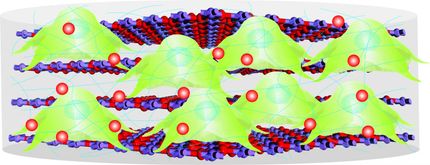Unexpected cell repairs the injured spinal cord
A study from Karolinska Institutet in Sweden has revealed how scar tissue is formed after damage to the central nervous system. For more than a century, scientists thought that glial cells were responsible for scar formation; now, however, a paper published in Science shows that spinal cord scar tissue largely derives from a completely unexpected type of cell called a pericyte, opening new opportunities for the treatment of damaged nerve tissue.
Lesions to the brain or spinal cord rarely heal fully, which leads to permanent functional impairment. After injury to the central nervous system (CNS), neurons are lost and largely replaced by a scar often referred to as the glial scar based on its abundance of supporting glial cells. Although this process has been known to science for over a century, the function of the scar tissue has long been disputed. However, there are indications that it stabilizes the tissue and that it inhibits the re-growth of damaged nerve fibres.
In this present study, Professor Jonas Frisén and his team of researchers show that the majority of scar cells in the damaged spinal cord are not glial cells at all, but derive from pericytes, a small group of cells located along blood vessels. They reveal that these pericytes start to divide after an injury, giving rise to a mass of connective tissue cells that migrate towards the lesion to form a large portion of the scar tissue. Their paper also shows that these cells are needed to regain the tissue integrity, and that in the absence of this reaction, holes appear in the tissue instead of scarring.
For many years, scientists have tried to modulate scar formation after CNS damage in order to facilitate functional recovery, and have concentrated on glial cells. However, these new findings indicate a critical and previously unknown mechanism for scar formation following damage to the nerve system, and give reason for further investigation into whether the modulation of pericytes after CNS injury can stimulate functional recovery.
Original publication
C. Göritz, D. Dias, N. Tomilin, M. Barbacid, O. Shupliakov, J. Frisén: “A pericyte origin of spinal cord scar tissue”; Science 2011.
Original publication
C. Göritz, D. Dias, N. Tomilin, M. Barbacid, O. Shupliakov, J. Frisén: “A pericyte origin of spinal cord scar tissue”; Science 2011.
Organizations
Other news from the department science

Get the life science industry in your inbox
By submitting this form you agree that LUMITOS AG will send you the newsletter(s) selected above by email. Your data will not be passed on to third parties. Your data will be stored and processed in accordance with our data protection regulations. LUMITOS may contact you by email for the purpose of advertising or market and opinion surveys. You can revoke your consent at any time without giving reasons to LUMITOS AG, Ernst-Augustin-Str. 2, 12489 Berlin, Germany or by e-mail at revoke@lumitos.com with effect for the future. In addition, each email contains a link to unsubscribe from the corresponding newsletter.
More news from our other portals
Last viewed contents

RAYDIAX secures €3.5 million in fresh capital to develop its therapy assistance computed tomography system in the fight against cancer

An ultra-stable protein nanowire made by bacteria provides clues to combating climate change
XXXXX_syndrome
List_of_subjects_in_Gray's_Anatomy:_IV._Myology





















































